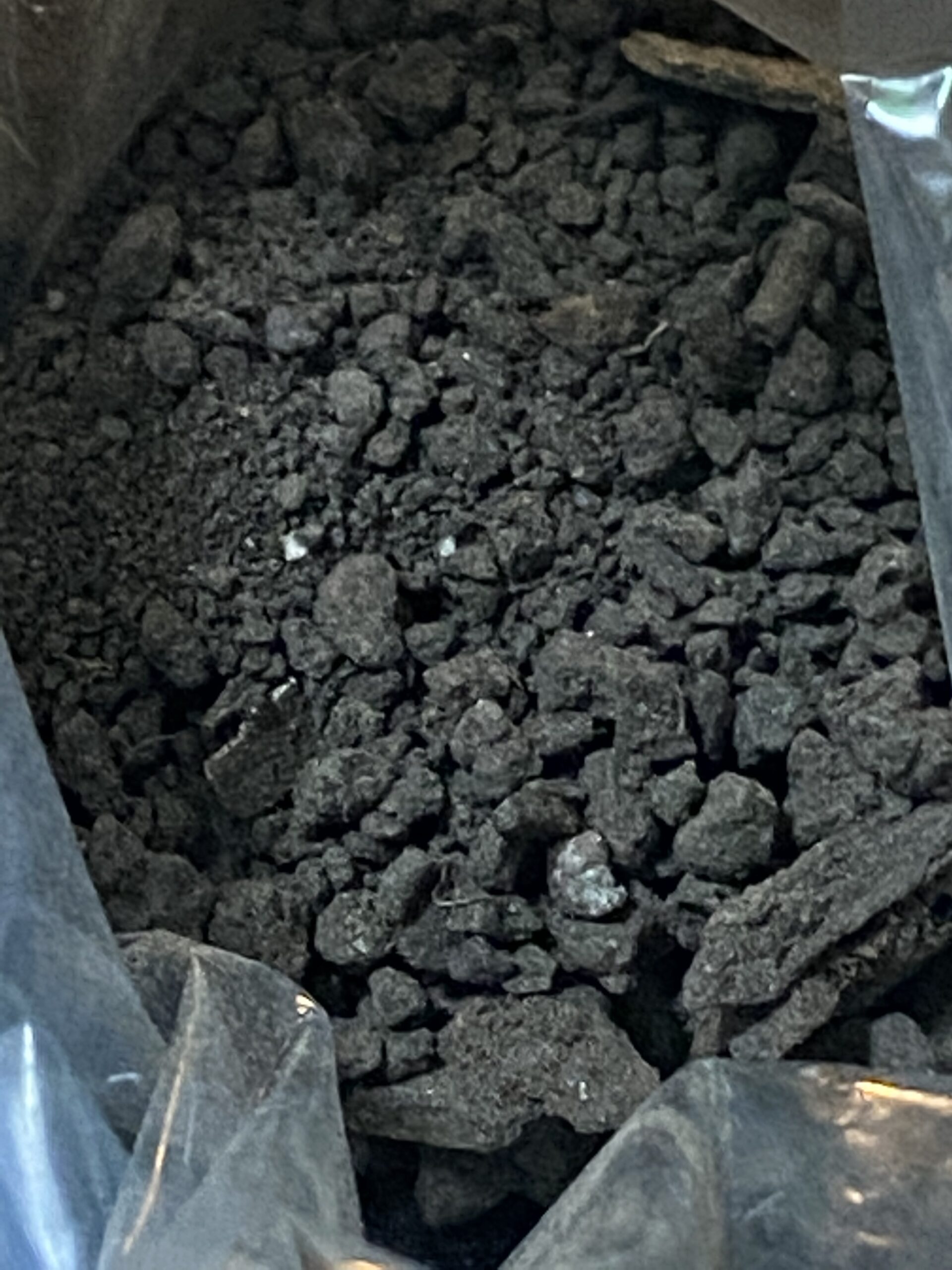TQ’s soil from Bozeman, Montana (samples collected May 24, 2022).

Published: July 11, 2022 – Monday
All tests done multiple times to confirm the results. Test result sets reported below are each for testing done for a minimum of 60-seconds per test.
- Article discussing soil hazard levels
- Article discussing testing soil
- Article discussing what I have done to address soil contamination in our yard
- Sample 1 – Big bed by garlic (photo above)
- Lead (Pb): 310 +/- 20
- Barium (Ba): 173 +/- 28 ppm
- Zinc (Zn): 233 +/- 23 ppm
- Manganese (Mn): 350 +/- 137 ppm
- Zirconium (Zr): 245 +/- 10 ppm
- Niobium (Nb): 294 +/- 17 ppm
- Iron (Fe): 37,700 +/- 800 ppm
- Platinum (Pt): 43 +/- 28 ppm
- Bismuth (Bi): 22 +/- 8 ppm
- No other metals detected.
- Sample 2 – Compost
- Lead (Pb): 283 +/- 19
- Barium (Ba): 2,310 +/- 217 ppm
- Zinc (Zn): 126 +/- 17 ppm
- Bromine (Br): 8 +/- 4 ppm
- Iron (Fe): 11,000 +/- 200 ppm
- No other metals detected.
- Sample 3 – NW corner where blue flowers grow
- Lead (Pb): 347 +/- 21
- Barium (Ba): 204 +/- 29 ppm
- Copper (Cu): 62 +/- 23 ppm
- Zinc (Zn): 311 +/- 26 ppm
- Manganese (Mn): 394 +/- 139 ppm
- Zirconium (Zr): 229 +/- 10 ppm
- Iron (Fe): 39,900 +/- 800 ppm
- Bismuth (Bi): 26 +/- 9 ppm
- No other metals detected.
- Sample 4 – Empty small square bed
- Lead (Pb): 336 +/- 20
- Cadmium (Cd): 11 +/- 4 ppm
- Barium (Ba): 64 +/- 26 ppm
- Antimony (Sb): 18 +/- 10 ppm
- Copper (Cu): 62 +/- 21 ppm
- Zinc (Zn): 234 +/- 22 ppm
- Manganese (Mn): 320 +/- 131 ppm
- Bromine (Br): 6 +/- 2 ppm
- Niobium (Nb): 309 +/- 16 ppm
- Indium (In): 12 +/- 6 ppm
- Iron (Fe): 33,000 +/- 700 ppm
- Platinum (Pt): 42 +/- 26 ppm
- No other metals detected.
- Sample 5 – L-shaped area off patio
- Lead (Pb): 117 +/- 12
- Cadmium (Cd): 8 +/- 4 ppm
- Barium (Ba): 106 +/- 26 ppm
- Antimony (Sb): 19 +/- 10 ppm
- Copper (Cu): 34 +/- 19 ppm
- Zinc (Zn): 219 +/- 21 ppm
- Manganese (Mn): 989 +/- 156 ppm
- Bromine (Br): 4 +/- 2 ppm
- Zirconium (Zr): 214 +/- 9 ppm
- Iron (Fe): 32,700 +/- 700 ppm
- Bismuth (Bi): 22 +/- 7 ppm
- No other metals detected.
For those new to this website:
Tamara Rubin is a multiple-Federal-award-winning independent advocate for consumer goods safety and a documentary filmmaker. She is also a mother of Lead-poisoned children. Tamara’s sons were acutely Lead-poisoned in August of 2005. She began testing consumer goods for toxicants in 2009 and was the parent-advocate responsible for finding Lead in the popular fidget spinner toys in 2017. Tamara uses XRF testing (a scientific method used by the U.S. Consumer Product Safety Commission) to test consumer goods for toxicants (specifically heavy metals), including Lead, Cadmium, Mercury, Antimony, and Arsenic. All test results reported on this website are science-based, accurate, and replicable. Items (and separate components) are each tested multiple times, to confirm the test results for each component tested and reported on. Please click through to this link to learn more about the testing methodology used for the test results discussed and reported on this website.

Never Miss an Important Article Again!
Join our Email List


